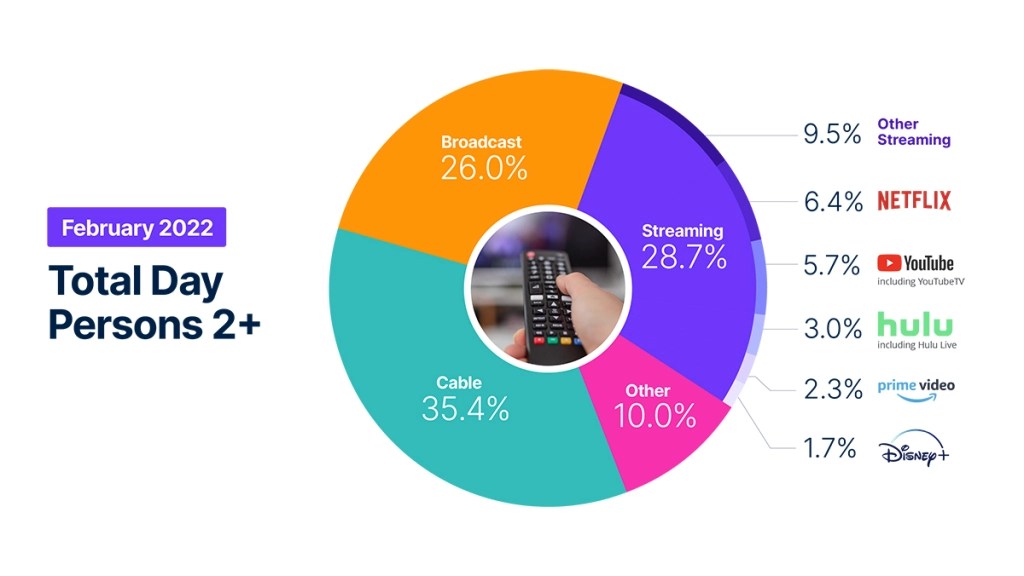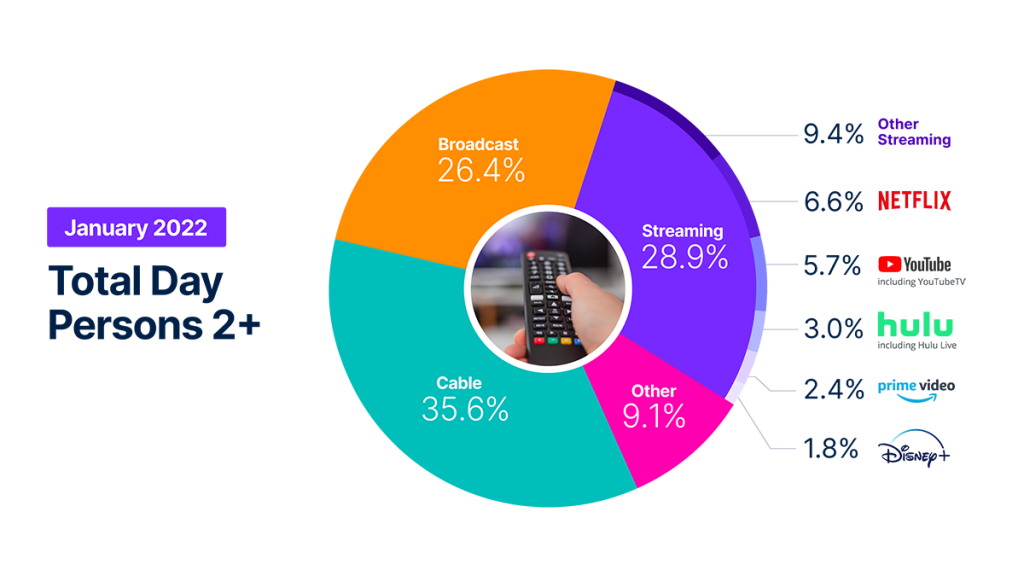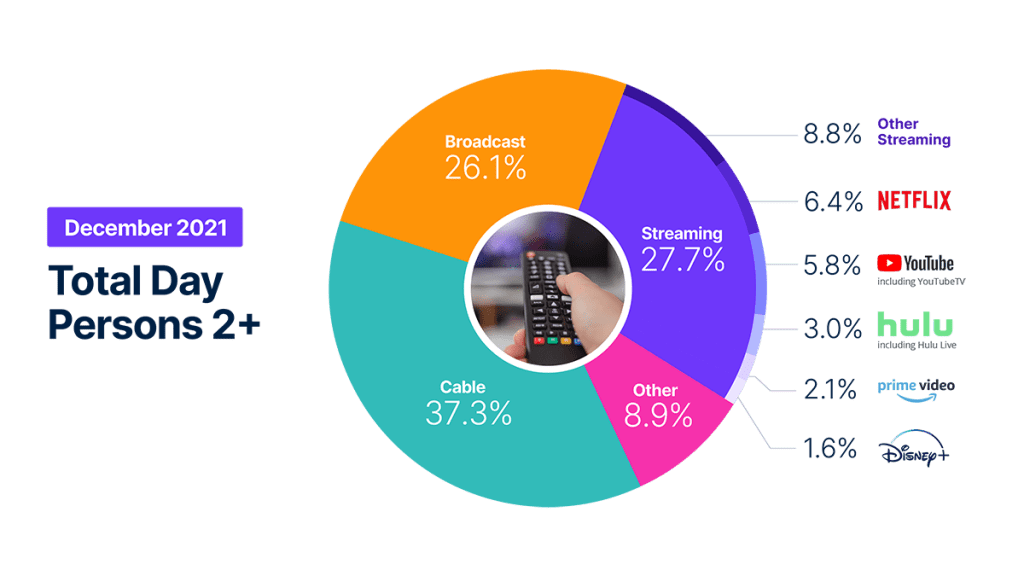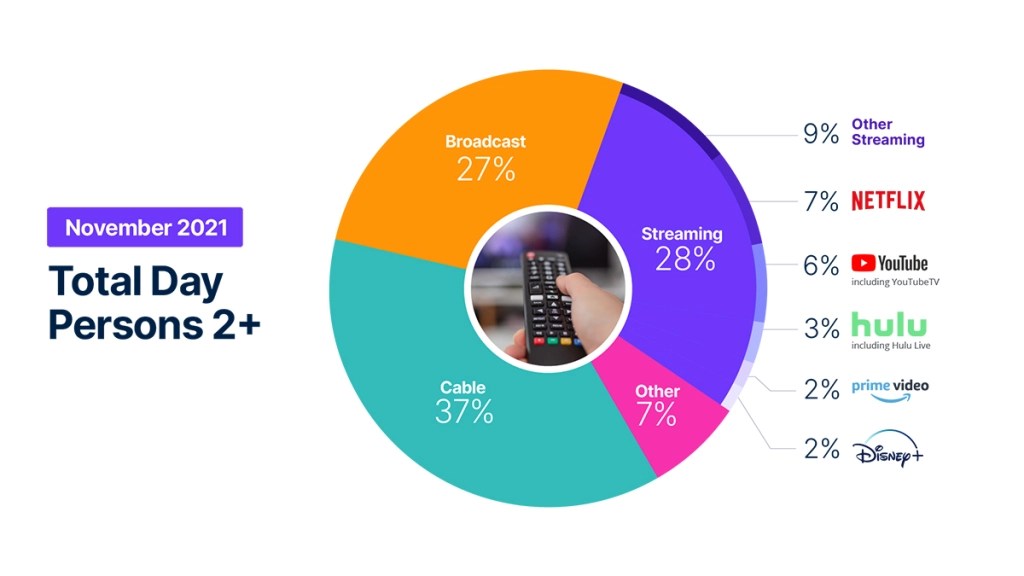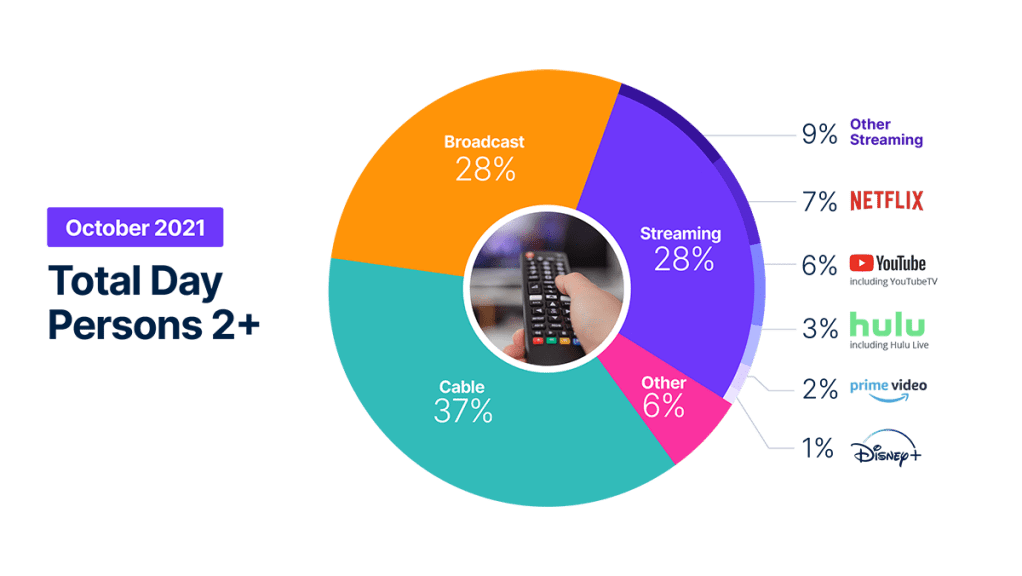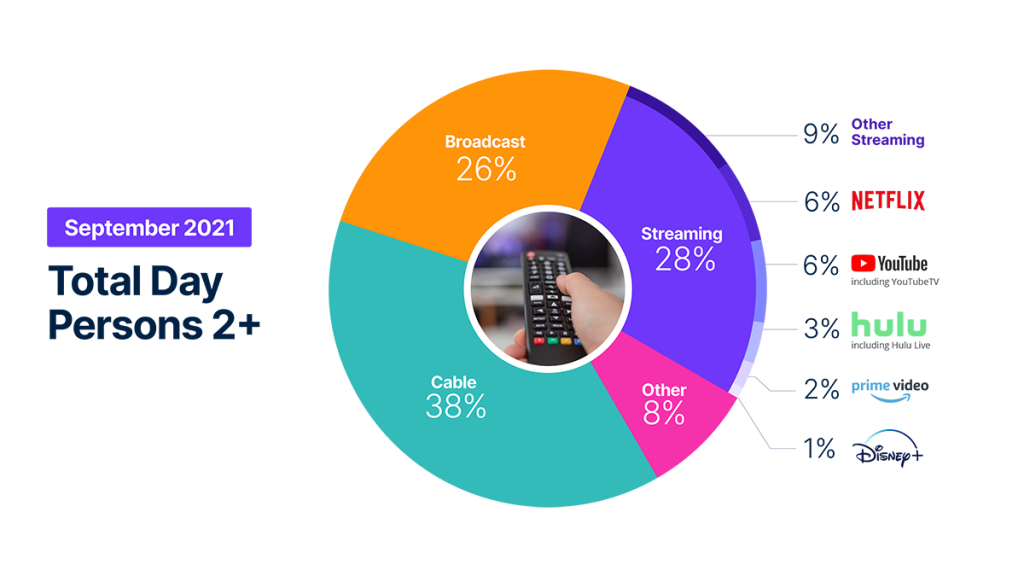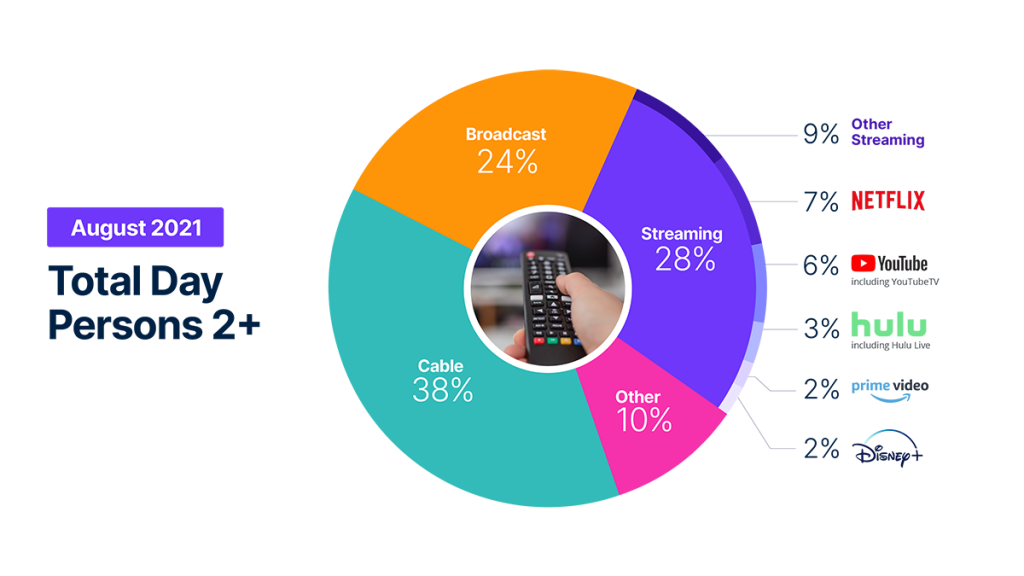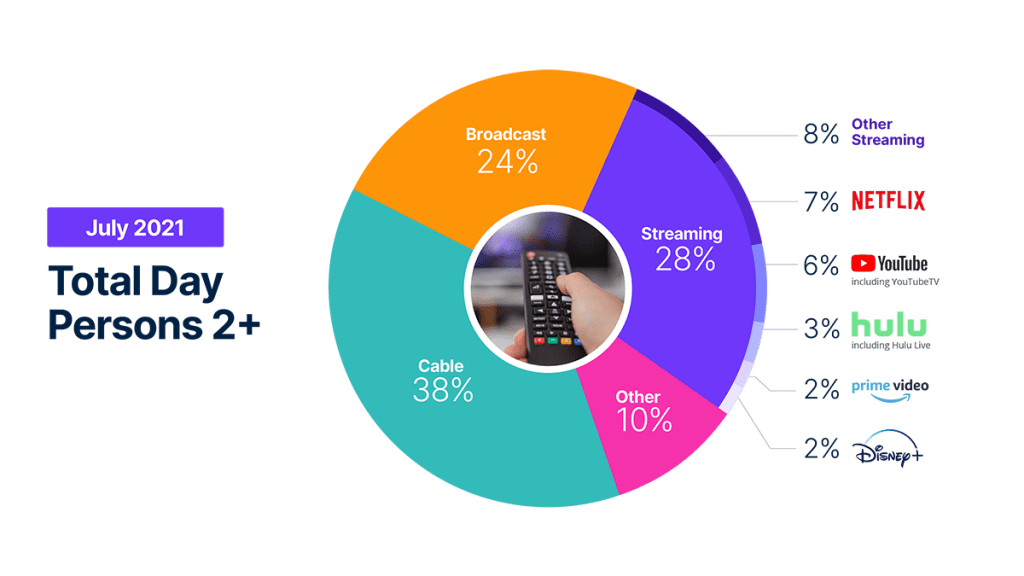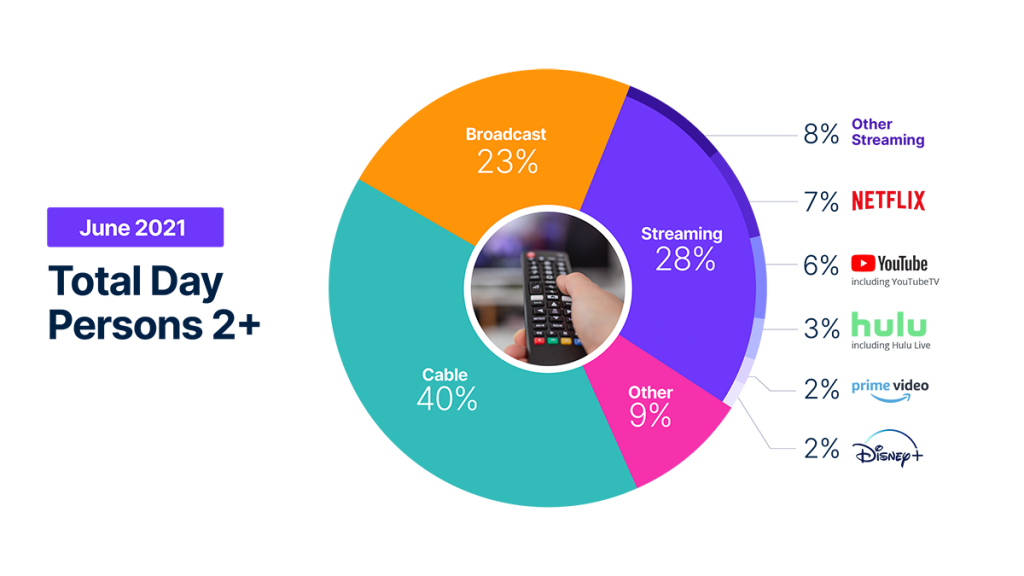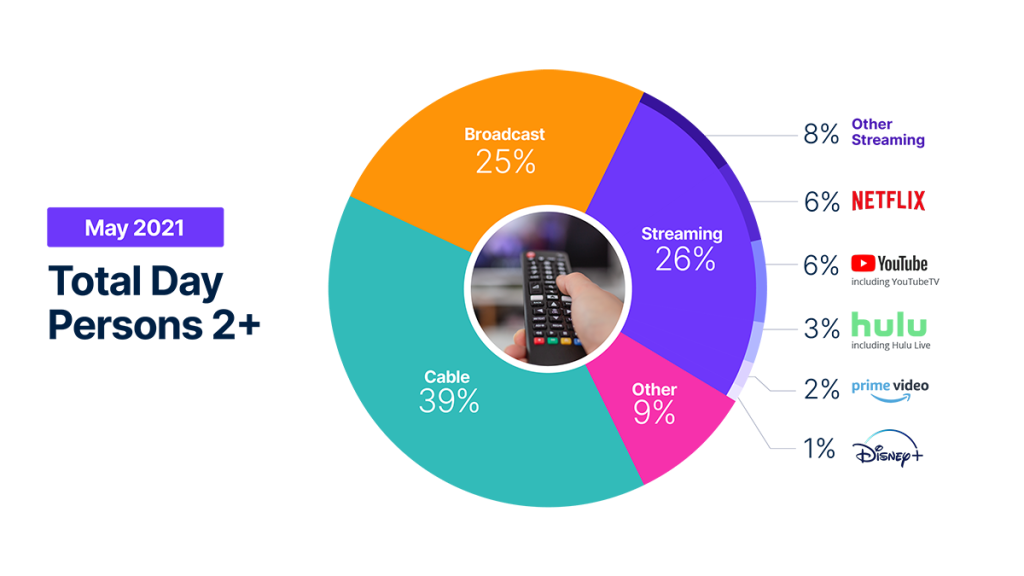February TV engagement always lags January, which shines as the heaviest viewing month of the year. This year was no exception, despite the trifecta of the Super Bowl, the Winter Olympics and the increased demand for news of Russia’s invasion of Ukraine late in the month. January 2022 was a five-week month, including the heavy usage week right after Christmas, which amplified its TV viewing prowess, resulting in an even bigger dip in February 2022 TV viewing than average: viewing was down 5.7% from January, below the 5% average over the past five years.
January 2022 set the bar very high, as streaming surged and broadcast boomed to provide an 8% bump in total viewership. But February wasn’t without its high points, as the Super Bowl gave broadcast a leg up over the streamers enjoying its highest weekly share of viewing (28.7%) since October 2021. As is typical when global news breaks, cable and broadcast news viewing spiked in late February when Russia invaded Ukraine. Cable viewing increased 54% in week 4, helping cable news gain one-fourth of all cable viewing (up from 16%-17%). Comparatively, broadcast news increased by 6.3% to 15.3% in the final week of the month, elevating the genre to second-largest behind drama.
While the Winter Olympics certainly boosted sports viewing in the month, a look at week-by-week broadcast viewing in the sports events genre highlights the impact of Super Bowl LVI.
The sports-heavy month was also a boost for streaming, as Peacock usage hit all-time highs, as it carried both the big game and the winter games. Peacock usage peaked during Super Bowl week, while remaining robust during the Olympics. Outside of sports, however, streaming’s share of viewing was largely flat month-over-month.
February was big for video gaming, as the “other” category gained almost a full share point due to increased time consumers spent video gaming during the President’s Day holiday, and other winter breaks around the nation, amplified by the highly anticipated release of games like Elden Ring, Horizon Forbidden West and Destiny 2.
Take me to the methodology details below.
Watch the video to hear Brian Fuhrer, SVP, Product Strategy at Nielsen provide a behind the scenes look at some of the viewing changes underpinning The Gauge.
METHODOLOGY AND FREQUENTLY ASKED QUESTIONS
The Gauge provides a monthly macroanalysis of how consumers are accessing content across key television delivery platforms, including Broadcast, Streaming, Cable and Other sources. It also includes a breakdown of the major, individual streaming distributors. The chart itself shows the share by category and of total television usage by individual streaming distributors.
How is ‘The Gauge’ created?
The data for The Gauge is derived from two separately weighted panels and combined to create the graphic. Nielsen’s streaming data is derived from a subset of Streaming Meter-enabled TV households within the National TV panel. The linear TV sources (Broadcast and Cable), as well as total usage are based on viewing from Nielsen’s overall TV panel.
All the data is based on a specific time period for each viewing source. The data, representing a 5 week month, includes a combination of Live+7 for weeks 1 – 4 in the data time period. (Note: Live+7 includes live television viewing plus viewing up to seven days later. Live +3 includes television viewing plus viewing up to three days later.)
What is included in “Other”?
Streaming platforms listed as “Other Streaming” includes any high-bandwidth video streaming on television that is not individually broken out.
Do you include live streaming on Hulu and YouTube?
Yes, Hulu includes viewing on Hulu Live and YouTube includes viewing on YouTube TV.
Encoded Live TV, aka encoded linear streaming, is included in both the Broadcast and Cable groups (linear TV) as well as under Streaming and other streaming e.g. Hulu Live, YouTube TV, Other Streaming MVPD/vMVPD apps. (Note: MVPD, or multichannel video programming distributor, is a service that provides multiple television channels. vMVPDs are distributors that aggregate linear (TV) content licensed from major programming networks and packaged together in a standalone subscription format and accessible on devices with a broadband connection.)
